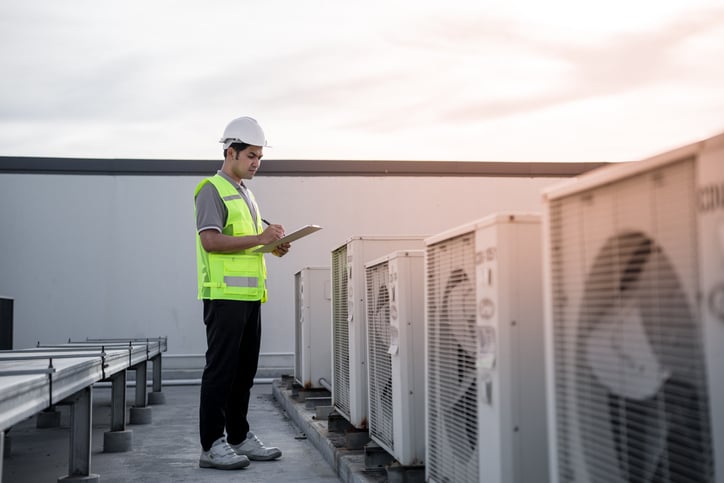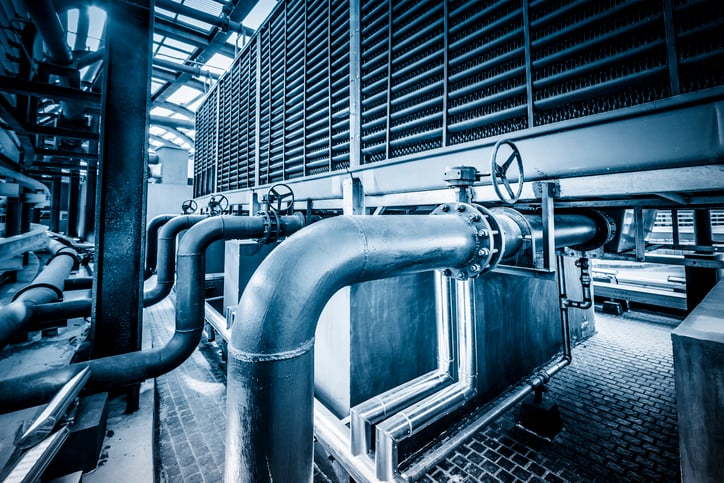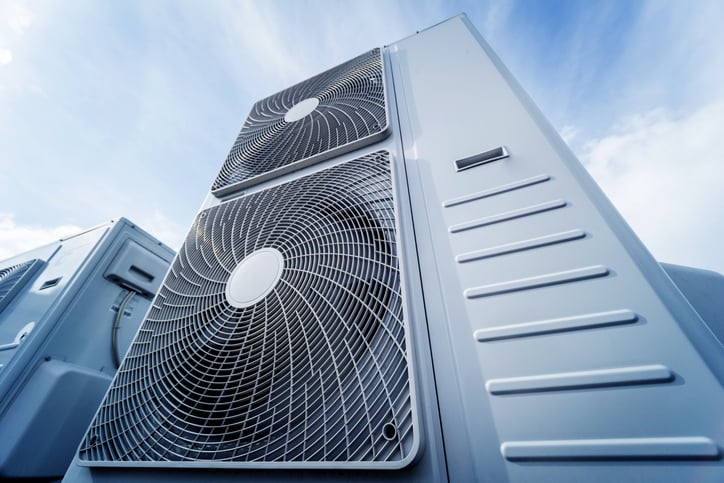HVAC System Upgrades and Optimization Via Sensors + 2 Checklists

Take a look at any HVAC system from 50 years ago.
What are its defining characteristics?
It’s large. It’s cumbersome. It’s inefficient.
And compared to the systems of today and the demands for them, it's now practically obsolete. Sure, there are some older systems out there that still do their primary function, but they’re practically gas-guzzling vehicles – inefficient and outdated.
The simple fact is that HVAC systems have changed. Even those providing climate control for large industrial facilities or commercial shopping centers are smaller, more responsive, and use less energy.
HVAC systems continue to change.
For those who design & manufacture HVAC systems or their controls, it's an exciting time for taking indoor climate control in a new, optimized direction. With advanced sensor technology, it's more possible than ever to bring improved functionality without compromise to HVAC in any application.
In this article, we'll explore when it's time to bring new sensor technology into the picture for HVAC system upgrades and optimization and how it's changing the game for indoor climate control.
Meeting Today’s Performance Demands With HVAC System Upgrades and Optimization
It’s easy to stay with what works.
For instance, if the HVAC temperature sensors you’ve integrated into system design are the same ones you’ve used for the last two decades and they do their job, why change a thing?
Or if your control system hasn’t been upgraded in an equally long amount of time and your customers aren’t complaining, is there really a need to make any adjustments?
In short, yes, and the reason is simple.
The expectations for HVAC functionality have changed. While the majority of performance demands are market driven, there are a fair amount that are regulations.
In more recent years, there’s new emphasis being put on HVAC system upgrades and optimization for several metrics where advanced sensor technology becomes a must:
|
Indoor Air Quality: In a nearly post-pandemic world, indoor air quality is getting a new level of attention. Now, HVAC systems are expected to help mitigate the spread of airborne pathogens, while scrubbing the air and monitoring for other pollutants and respiratory hazards. How Advanced Sensor Technology Fits in: Advanced sensors now can detect various pollutants, CO2 levels, and other air quality indicators. This capability allows HVAC systems to adjust ventilation rates automatically and maintain healthy indoor environments. |
|
Energy Efficiency: The push for HVAC system optimization for energy management isn't exactly new, but it's certainly not one that's going away any time soon. In fact, more HVAC systems are transitioning to fully electric operations, reducing reliance on fossil fuels and lowering carbon emissions. How Advanced Sensor Technology Fits in: Sensors can optimize energy use, adjusting system use based on occupancy (or lack thereof), time of day, or specific demand needs. |
|
Remote Monitoring and Control: In a certain respect, HVAC control system optimization strategies are no different than what we're seeing with other building management systems – you no longer need to be in the same room or even continent to control the system. Thanks to IoT (Internet of Things) technology, HVAC system managers can give the system attention no matter where they are. How Advanced Sensor Technology Fits in: Advanced sensors can provide real-time data on system performance, enabling remote monitoring and control. This not only allows for proactive maintenance but also allows for more efficient troubleshooting and issue resolution. |
|
Integrated Control Systems: Along the same lines as our last point, IoT technology is streamlining management of most building or campus-wide systems – from HVAC to lighting and security – from a single platform. How Advanced Sensor Technology Fits in: The same as with remote monitoring, advanced sensor technology makes it easy to monitor certain HVAC performance metrics and environmental factors in real-time alongside other building or campus operations. |
Checklist #1: 6 Indicators Your HVAC System Design Needs a Sensor Upgrade
To our point about sticking with what works ... how do you know when it's time to integrate advanced sensor technology into your HVAC or HVAC control systems?
The answer goes beyond simply being overdue (though if it's been a decade or two since you made changes to your HVAC system components, it might be time). The fact is expectations for HVAC functionality have changed.
For HVAC and HVAC control system designers and manufacturers, there are a few telltale signs that it's time to rethink the sensors you're using for climate control management:
-
High Energy Consumption – If system evaluations reveal increased energy consumption without changes in demand, this suggests inefficiencies in current sensor technology, underscoring the need for systems with more precise control capabilities.
-
Indoor Air Quality Optimization – Signs of deteriorating air quality, such as elevated humidity or particulate levels, indicate the existing sensors' inadequacy in adjusting HVAC operations to maintain optimal indoor conditions.
-
Control System Responsiveness – Inconsistencies in temperature regulation, unnecessary cycling, or failure to achieve desired setpoints highlight limitations in the system’s current sensor feedback mechanisms, necessitating upgrades to more responsive and accurate sensors.
-
Adaptation to Alternative Energy Sources – Transitioning HVAC systems to accommodate shifts to electric or other energy sources demands sensor technologies that are compatible with these newer, more sustainable systems, ensuring maximized efficiency and performance.
-
Increasing Repair Demands – A rise in maintenance requirements and repair costs points to the aging of system components, including sensors. Upgrading to newer, more robust sensor technologies can reduce long-term costs and enhance system reliability.
-
Remote Accessibility & Functionality – Limited or non-existent remote monitoring and control capabilities in current systems signal a need for integration of smart sensors and IoT technologies.
Bonus Indicator: Meeting Regulations/Industry Standards – This one isn't so much an indicator as it is a reality for HVAC performance. Just like HVAC systems, the regulations and industry standards governing them evolve, too. Put simply, the "old" technology comprising your HVAC design might not cut it in meeting the latest performance requirements.
Checklist #2: Challenges for Implementing Advanced Sensors
Ideally, HVAC system upgrades and optimization with sensor technology would be as easy as swapping out one component for another, newer one. In the design phase of creating an HVAC system or its control mechanisms, that's an easier task as everything is conceptual and can be worked out on paper.
But with existing systems – particularly, older HVAC systems – adding advanced sensors can present some unique challenges. Before starting to add the latest advanced sensor technology to your system, consider
-
Cost: Upgrading to advanced sensor systems can be expensive, especially for large buildings or complex HVAC systems. The initial investment for sensors, along with the cost for installation and system configuration, can be prohibitive.
-
Complexity of Installation: Installing new sensors in an existing system isn't always easy, requiring significant downtime or disruptions. This is especially concerning in buildings & applications that cannot afford to go without heating or cooling for extended periods.
-
Compatibility: Some older HVAC systems may not be compatible with advanced sensor technology, meaning additional equipment and work are required to make the system ready for integration. The same goes for HVAC control systems – not all control systems readily interface with every sensor available. This can add to both cost and complexity.
-
Accessibility: Integrating advanced sensors into existing HVAC systems presents accessibility challenges, such as limited space, complex system designs, and structural barriers that complicate installation. Additionally, the need for temporary system shutdowns can disrupt building operations, necessitating careful planning and expertise for effective integration.
The Easiest Solution
As with any major building system's design, there are plenty of options for the components comprising it.
Certainly, there are the good, better, best options. There are the easy, easier, and easiest options. And there are also the comparable options. It can get overwhelming quickly.
So how do you make the right choice and bring the right advanced sensor technology to your HVAC system upgrades and optimization without worry?
Let's cut right to the best (easiest) solution for HVAC system design upgrades and optimization: partner with an experienced sensor manufacturer.
Why?
With specialized knowledge and capabilities to tailor sensor technology to fit specific system requirements, the process of making HVAC design or system upgrades is simplified. More importantly, getting the right advanced sensor is out of your hands – it's on your manufacturer to deliver the sensor tech that meets all performance specs of your system.
HVAC System Design & Sensor Technology That Delivers
Like all machines and technology, HVAC systems will continue to evolve and adapt to the latest demands.
While it's nearly impossible to predict where the next round of industry changes will take us, one thing is certain: Advanced sensor technology will play a crucial role in HVAC system optimization and performance.
Upgrade YOur HVAC System's Sensor Technology
Speak with one of our sensor engineers today:




